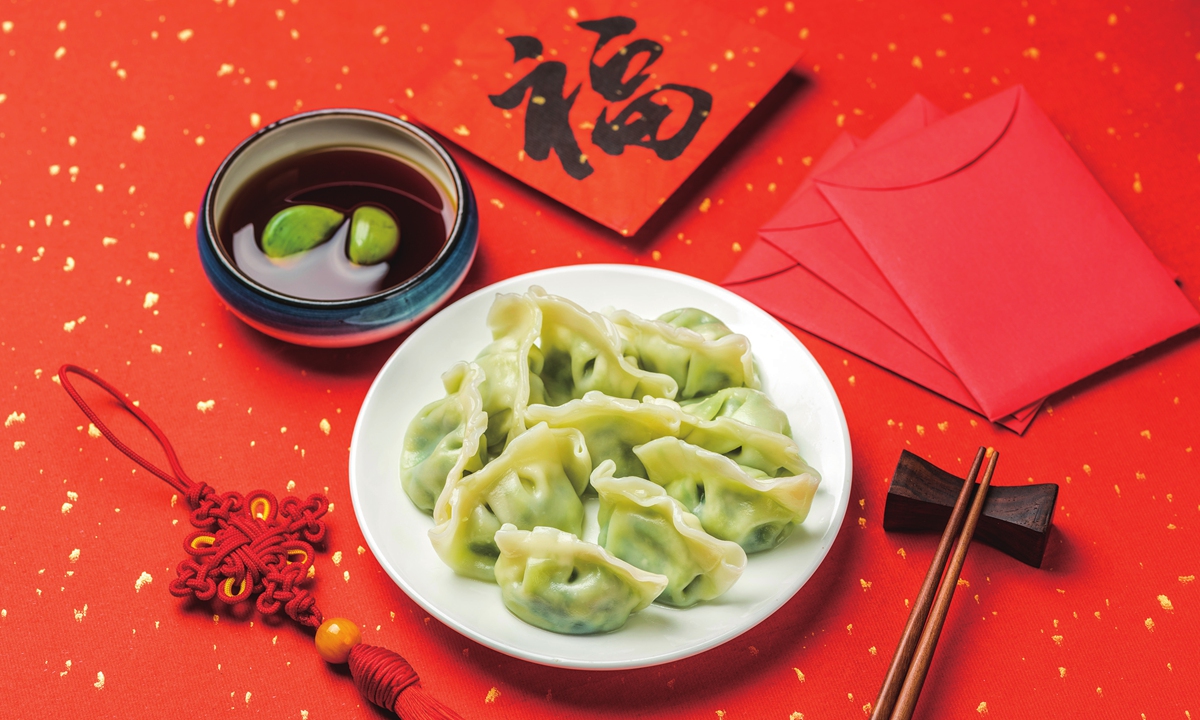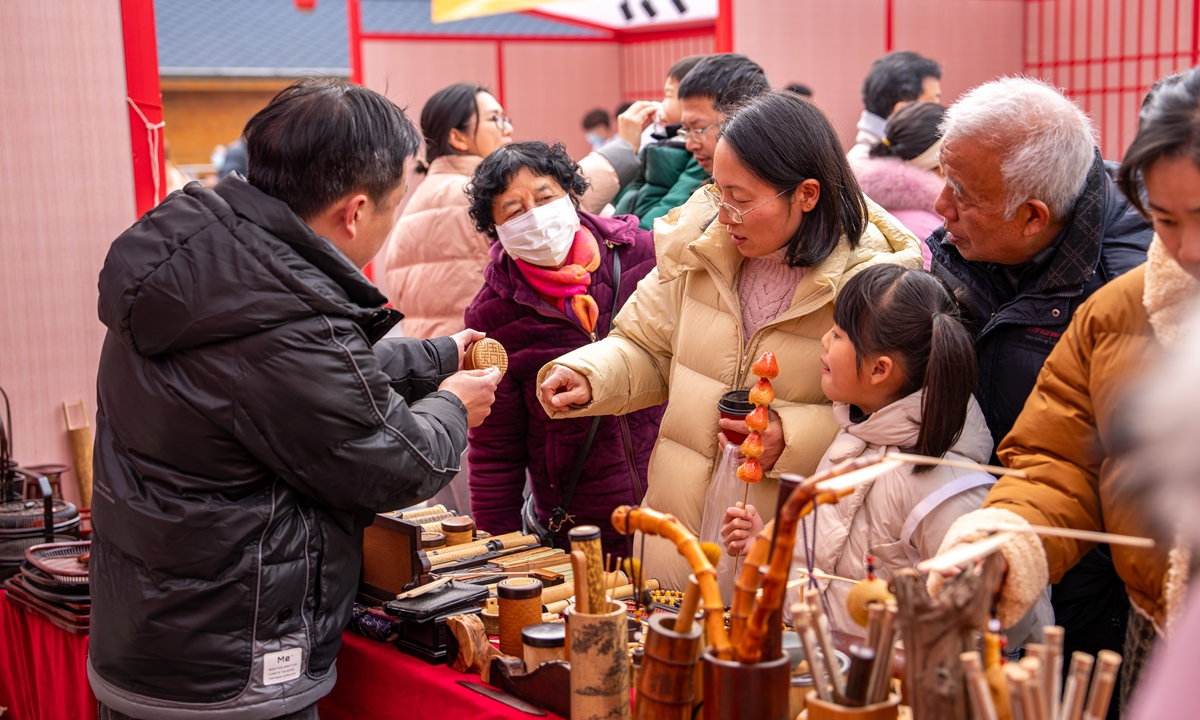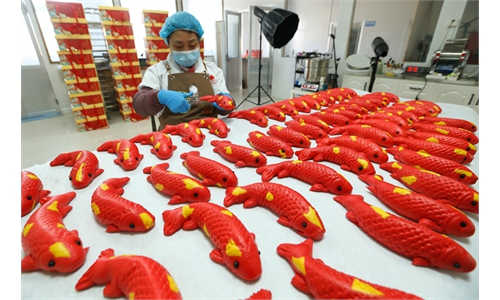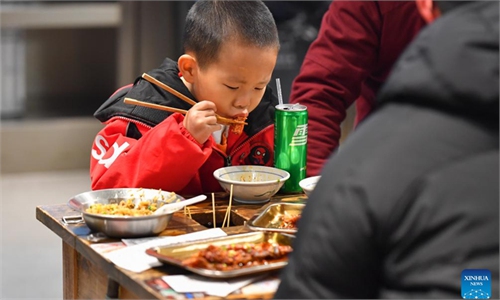ARTS / CULTURE & LEISURE
East or West, homemade food is best
Celebrating Spring Festival with diverse culinary flavors

Photo: VCG
The Spring Festival is the most cherished holiday for the Chinese people, and food plays a central role in Chinese New Year celebrations as each dish carries hopes and blessings for the upcoming year.
Being away from home for some time during the year, all the family members would return home during the most important holiday to cook and enjoy the hometown delicacies. East or West, home dishes are the best.
China's extensive and deep-rooted culinary culture, along with diverse flavors from all parts of the country, see people celebrating the festive season through different regional cuisines and distinctive culinary traditions while ushering in the vibrant lunar new year.
Crunchy snacks
In North China's Tianjin Municipality, Fried Dough Twists, Goubuli steamed stuffed buns and Ear-hole-shaped fried rice cakes, are the most popular gifts to present to friends during the festival.
Fried Dough Twists are particularly appreciated by the public, thanks to their crispy outer layer and soft dough interior, which continually stimulates one's taste buds.
Originated from traditional Chinese culinary culture, the history of cooking fried snacks can be traced back to the Tang Dynasty (618-907) when it was considered a festive food used for ancestral worship and offerings to deities.
Over time, with societal development, it has gradually transformed into a popular snack among ordinary people and been passed down till the present day.
The ingredients of the snack are very simple, requiring only flour, sugar, sesame seeds, soy sauce, and other minimal ingredients, processed by different proportions and techniques.
During the preparation, it is crucial to master the dough of toughness and elasticity to give the crispy, fragrant, and yummy texture.
Yao Hui, a resident of Tianjin, told the Global Times that she buys boxes of this snack for her friends and colleagues from other provinces every year. "The crunchy bite has become an icon of Tianjin," Yao said.
In addition, celebrating the holiday without dumplings is out of the question in China.
The family members regard making dumplings together as an opportunity to bond with each other. Due to its resemblance to Yuan Bao, or ancient Chinese currency, dumpling is endowed with the auspicious meaning of "bringing in wealth and treasures."
Besides the traditional meat stuffing, people also include candies, red dates, peanuts, and other items in the filling, and even a coin.
Whoever consumes a dumpling with a hidden coin in it symbolizes prosperity in the new year, and finding peanuts signifies good health and longevity.

People buy snacks at a fair on January 27, 2024 in East China's Zhejiang Province. Photos: VCG
Sticking together
While people in northern China like to make dumplings, people in southern provinces have a fondness for eating Nian Gao or sticky rice cake during the Spring Festival.
The term nian sounds like the word for "year," and gao sounds like "high" or "tall." Therefore, consuming Nian Gao is associated with the wish for growth, progress, and the promise of a better year ahead.
Additionally, the sticky and elastic nature of glutinous rice cakes symbolizes the idea of family cohesion and unity. It is believed that by consuming the rice cake, family members will stick together, and their bonds will become stronger over the course of the year.
The cooking techniques of the sliced rice cake vary from region to region. In provinces in the lower reaches of the Yangtze River, rice cakes are made through steaming and then pounding glutinous rice flour, which can be thinly sliced for stir frying or to be included in soups.
A similar process is employed in the southwestern provinces to make glutinous rice cakes, or known as Ci Ba, also produced by repeatedly pounding steamed glutinous rice.
These cakes are typically pan-fried or deep-fried until they turn golden and crispy, then dipped in sugar before consumption.
Tangyuan, or sweet rice dumplings, are another indispensable Spring Festival food for people in southern China.
The glutinous rice ball comes in various fillings, such as sesame, red bean paste, and jujube.
The pronunciation of Tangyuan is similar to "tuanyuan," symbolizing the family reunion. Consuming Tangyuan signifies unity and happiness of the entire family.
This term used by Chinese people to express their yearning for relatives who are far away from home and convey their beautiful wishes for life.
In Southwest China's Guizhou Province, the air fills with the aroma of Mihua or fried glutinous rice pancake as families are making the traditional delicacy.
The pancake carries symbolic connotations of happiness, beauty, and joyous reunions.
Following the steaming process, the glutinous rice is meticulously molded and adorned with natural dyes such as red lotus flowers or aromatic herbs. Once deep-fried to perfection, the pancake acquires a distinctive crunchiness.
From sticky red bean bun in northeastern region to smoked Chinese bacon in southern provinces, preparing and sharing traditional dishes during this festive season not only delights senses but also nourishes the spirit, creating local people's cherished memories that endure for years to come.
As the tradition is passed down to younger generations during the festival, the folk custom reinforces familial ties, preserves cultural identity, and fosters a sense of community beyond the confines of family unity.



